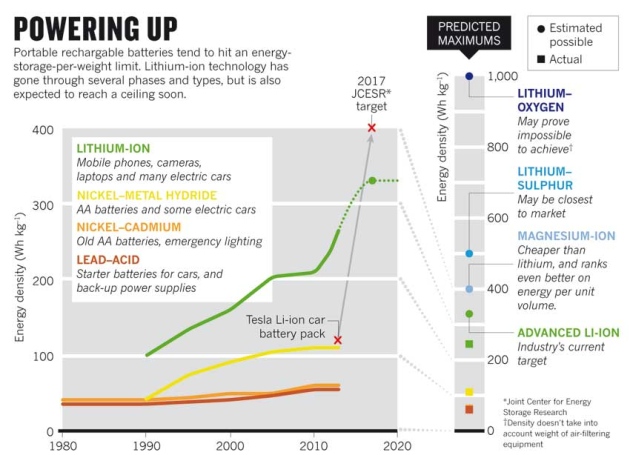. If your house has 100 amp service, it's about half the total rated capacity of the incoming electrical service to your house! You are not going to get much faster charging capacity than that without up-rating your incoming electrical service. (It is certainly possible to get more than 100 amp service - but not by an enormous factor, if you are in a normal area with single-phase residential distribution.)
Or, with this new tech, you can charge it at 100 kw for 0.1 hours. Now we are approaching the length of time for a normal gasoline filling station. There is no way you could get that amount of power to a normal residence - but most people would charge overnight, so perhaps this is only needed at the equivalent of a gasoline filling station. But still ... This is about 100 amps 575 volt 3 phase. That's a lot! It's more than you can get from a normal 575 volt welding plug (industrial).
The world will eventually switch over to electric propulsion, I have no doubt of this. But there's some infrastructure issues that have to be taken care of ...
you are talking from an electrician perspective I think,,as 575v is a very old term as today industry in ontario is 347v.. or also called 600v ... same thing.., but , there is a lot of information you are leaving out.. so most of your facts would be true for a welder , or large stove, type appliance.. a battery has a taper charge rate,, and really changes the electrical characteristic requirements from the supply... and the infrastructure builders have been waiting for this since mid 90's and for sure since 2005 ,,, in most modern subdivision , especial ontario..
"
Thanks Brian P for some actual information. Considering the poor track record of people vs high voltages/amps, I hope there's some serious idiot-proofing in the works, both at the consumer and infrastructure levels. The emissions we reduce with electrical vehicles better not be replaced with emissions from additional building/car fires.
smart chargers have been around for over 30 yrs... used in industrial fork lift battery chargers.. and smaller ones too.. mandated by wsib... for exactly the reason you stated... and EV chargers are smarter than that.. as there is a plan to solve some political problems in actually drawing power from a fully charged car... to supply the grid during a high peak... electrically it can be done fairly easy... but having a simple device for the consumer to allow the car battery to feed the grid, and maintain enough charge to still drive to next planned destination... and get reimbursed thru the meter ,, etc etc..
The point is, now that this is possible, commerce can build the infrastructure. The electrical infrastructure rarely needed these demand, but it is not high tech to do this.
In a country that generates over half of electricity by hydro, this makes sense. The 10,000 charge cycle means these batteries could be used for massive off peak storage of currently wasted energy.
What is impressive is the rate of these discoveries, which is related to countries that are spending on this R&D I. E. Not Canada. No one cared before 6 to 8 years ago.
Hmm,,, I wonder where you get the specs.. I think Hydraulic stations,, or hydroelectric .. are only about 25 percent... not really half... and Ontario certainly has been expecting this to happen ... they quoted the late 90's as being a crisis back in 1983.... as there was predictions all cars would be electric by mid 90's... of course the time line is dragging along
years ago.. I built an EV.. copied ,,, er I got my inspiration from EV from the early 1900's,, once I swapped motor control from resistors to electronic chopper circuits,, and made the motor work.. I lost interest.. due to price of batteries... also that AC drives were becoming popular... and I had a huge hunch that license and insurance mid be a hurdle... that was 1981.. I just scrapped the motors from that project this summer..
recently,, I thought I'd convert something,, especially a motorcycle.. I have seen some cool builds on you tube,, and that was my new inspiration,, along with 2 large cap chargers in the parking lot.. where my boss has a Tesla C .... so presently I could ride for no fuel costs..... but sigh.. I really lost my ambition again with the capitol required to build a bike,, and the probability of insurance hassles...
If you want to chat with EV guys in Ontario,, there are well educated folks at the links thru
http://evfest.ca/
[url]http://www.mto.gov.on.ca/english/dandv/vehicle/electric/
http://evco.ca/site/links
[/URL]




